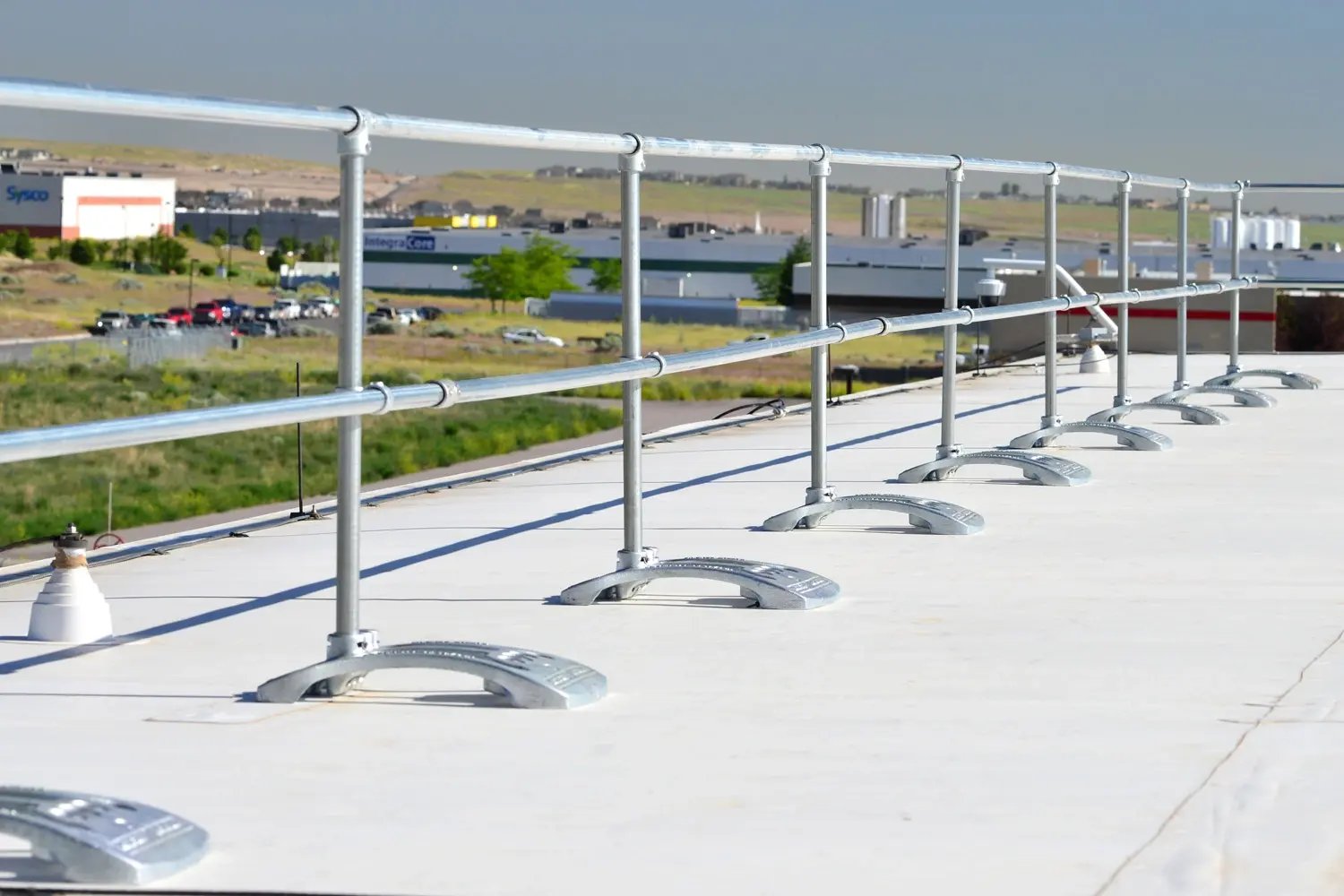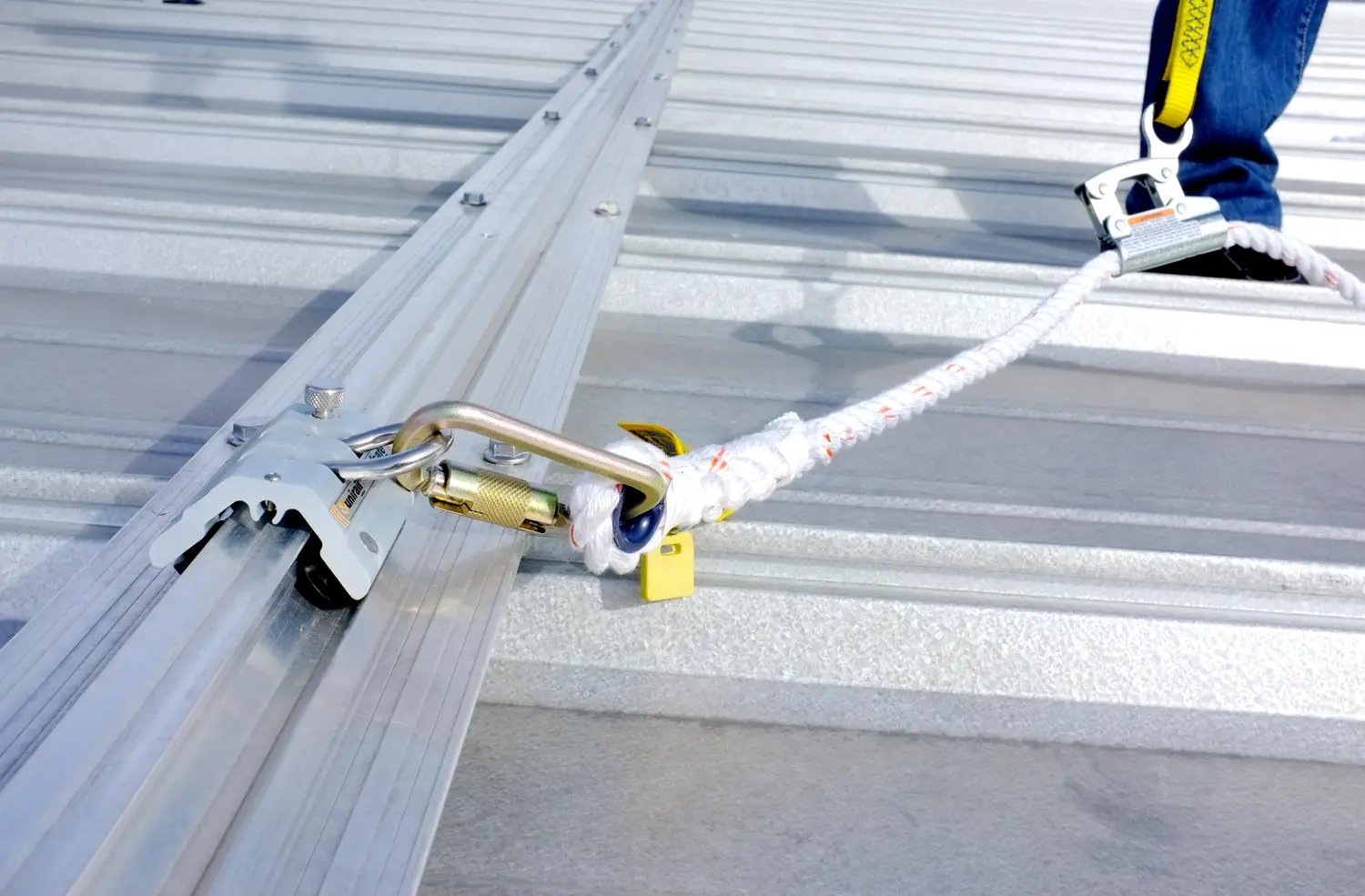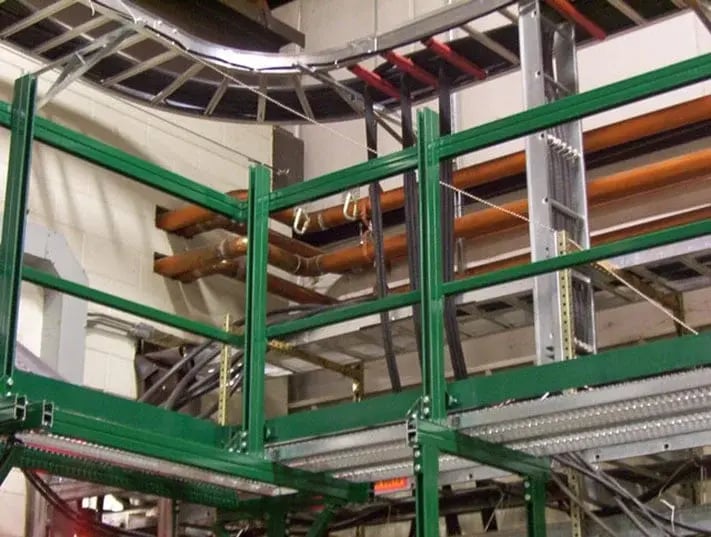Hydroelectric Power Generation
OSHA-compliant fall protection for dams and hydroelectric power generation plants is vital to keep your maintenance staff safe and your facility online. Providing safe access to the pumps and valves forming the backbone of your hydroelectric power plant requires a comprehensive fall prevention strategy, which includes the proper mix of fall protection equipment, a descent and rescue plan, personnel training, and partnering with a fall protection company that appreciates the unique nature of your facility’s access points and potential fall hazards.

Fall Protection Solutions
Design Considerations
Many of the design features commonly associated with hydroelectric power generation plants present significant fall hazards. Most of the fall protection in this market can be seen in dam applications where large amounts of water are used to generate power. Fall protection systems for hydroelectric power plants are typically spanned over longer sections because dams often lack the needed structure to secure a horizontal lifeline or single point anchor.
The pump house adjacent to the dam also presents confined space challenges. These buildings typically feature 20 square feet wide perimeters and run from 60 to 100 feet underground, with instrumentation monitoring stations at varying depth levels. The large interior opening of the pump house, sometimes referred to as a pit, allows valves, pumps, and related equipment to be taken in and out of the facility for servicing. Workers are also exposed to fall hazards when descending and ascending from the pump house pit to perform routine maintenance.
Catwalk systems spanning the internal perimeter of the pit are often used to provide safe access to the monitoring stations, pumps and valves in the pump house. Catwalk systems must make use of a guard rail, horizontal lifeline, rigid track system, or single point anchors to provide safe access. OSHA compliant fall protection is also needed to protect maintenance staff accessing various levels in the pump house pit, and rescue equipment is needed in the event of a fall. Diversified Fall Protection has years of experience installing OSHA compliant fall protection systems for dams and hydroelectric power generation plants.

b-1.jpg?width=1368&height=1340&name=Rail%20(175)b-1.jpg)



1.webp?width=2000&height=1520&name=HLL%20Overhead%20(661)1.webp)


